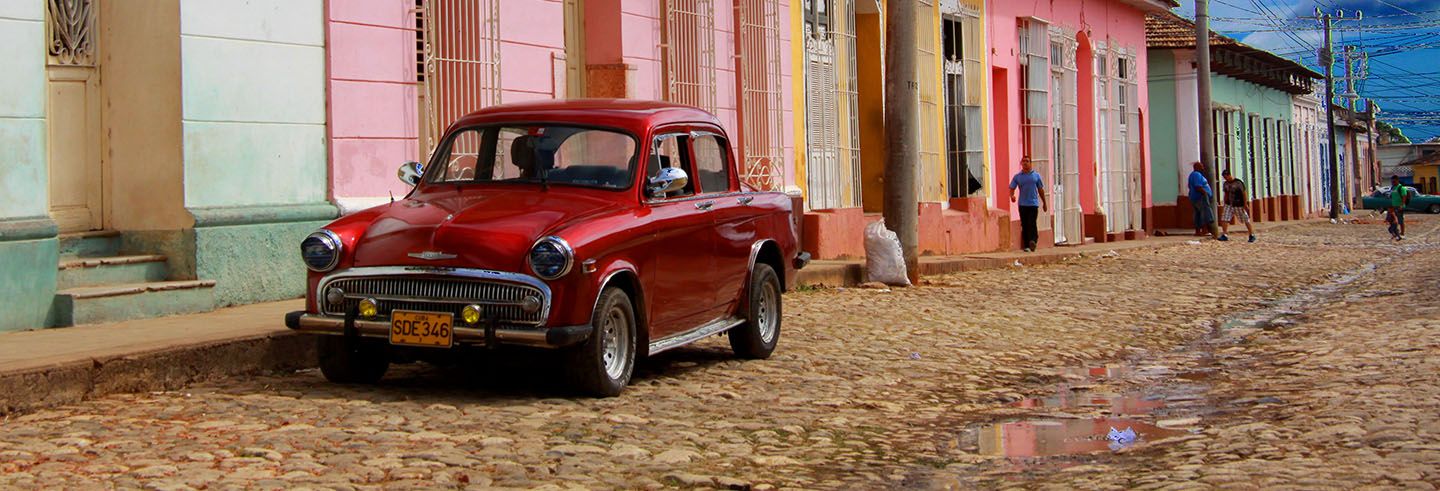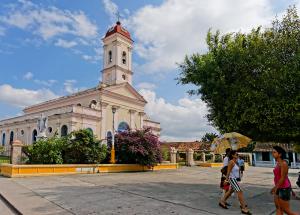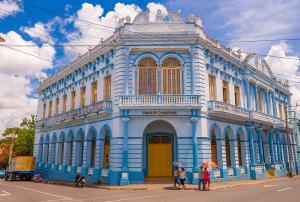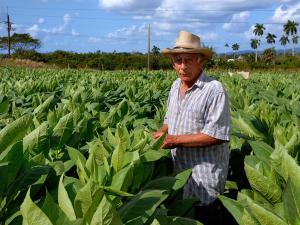

Pinar del Río, Cuba
Visit the beautiful region of Pinar del Rio in Cuba, famous for its tobacco plantations and nature reserves
Pinar del Río is a province in the western part of Cuba filled with exuberant natural wealth and an unmistakable tobacco culture known as guajira. The region has two Biosphere Reserves: the península de Guanahacabibes and part of the Sierra del Rosario; as well as the Valle de Viñales, which is a UNESCO World Heritage Site. You can also practice scuba diving in the beautiful water spots of playa María la Gorda.
The territory was populated by an ancient pre-Columbian tribe known as the guanahatabeyes, a nomadic indigenous people who lived in caves and depended largely on marine life. These were peaceful clans that had already disappeared before the arrival of the Spanish in 1492.
Index:
- What are the best things to see in Pinar del Río?
- What are the best excursions from Pinar del Río?
- Which are the best lodgings in Pinar del Río?
- How to get to Pinar del Río?
- Which is the best date to go to Pinar del Río?
What are the best things to see in Pinar del Río?
Although Pinar del Río may not seem as spectacular as other cities in Cuba, it is not far from monumental. Proof of this is, the Teatro José Jacinto Milanés (José Jacinto Milanés Theatre), in the neoclassical style and one of the great Cuban theatres, and the Museo de Ciencias Naturales Sandalio de Noda (Sandalio de Noda Natural Science Museum), erected in the spectacular Guasch Palace, which houses a large collection of the Cuban archipelago's fauna and flora.
In order to continue knowing the history of Pinar del Río, we recommended you to go to the Museo Provincial de Pinar del Río (Provincial Museum of Pinar del Río), located in an eclectic building of late XIX century it lodges a collection from the first inhabitants of the island until the present time.
No less spectacular is the Palacio de los Matrimonios, a building with a hundred years of history, where you can see what Cuban weddings are like first hand.
Pinar del Río is the capital of the tobacco of Cuba. So, you will be able to observe how Havana cigars are produced from the plantations, like the plantación de tabaco Alejandro Robaina, to the traditional way of working of the guajiros, the Cuban farmers. You will also be able to taste them.
If you fancy a unique drink in the area you must try the Guayabita del Pinar before leaving Pinar del Río. The drink has rum mixed with guava fruit, which gives it a sweeter taste.
What are the best excursions from Pinar del Río?
Pinar del Río boasts an excellent position within Cuba to discover many of its natural treasures.
Of course, the place you can't miss is the Parque Natural de Viñales (Viñales Natural Park). There you can discover the typical mogotes and spectacular places like the Cueva del Indio (Indio Cave) or the unique Mural de la Prehistoria (Mural of Prehistory).
One of the best tobacco plantations you can visit is the Casa del Veguero, near Viñales. There, you will learn about the traditional way of growing Cuban cigars. Likewise, to complete the trip, you will be able to contemplate the whole Valle de Viñales from the mirador los Jazmines (Jazmines Outlook).
One of the most special places you can visit is the Palenque de los Cimarrones in the Cueva de San Miguel (San Miguel Cave). There, you will learn first-hand about the difficult living conditions of the runaway slaves, called cimarrones.
If you prefer to spend a few days on the beach, Pinar del Río offers some of the best beaches in Cuba. Keys like Cayo Levisa or Cayo Jutías will make you feel like you're living in paradise, while the playa María la Gorda, considered to be one of the best diving spots on the island, largely because of the black coral, are your ideal destination if you like to dive.
Which are the best lodgings in Pinar del Río?
Pinar del Río has some hotels, like the Hotel Vueltabajo or the Hotel Pinar del Río. However, the preferential option is Casas particulares (private houses or accommodations). In this way, you will discover not only the customs of the area but also the traditional Cuban hospitality.
The ideal way to get to know the area in depth and not leave any of its corners unexplored is to spend a couple of nights in the province.
How to get to Pinar del Río?
You have several options to get to Pinar del Río. The best is to travel by the East-West highway directly from Havana, either by private or shared taxi or by collective transportation.
You can also take a tour from Havana, although this way you might miss out on seeing all that the province has to offer, such as Cayo Jutías and the Valle de Viñales.
Which is the best date to go to Pinar del Río?
One of the best times to visit Pinar del Río is in the middle months of the year, from May to August, since that is when you can admire animals such as the beautiful sea turtles. However, if you prefer to discover the fantastic birds that cross the sky of Pinar del Río, the best time is between December and March.
If you want to discover one of the most colourful celebrations of Cuba, you will not be able to miss the Carnival that is celebrated at the beginning of July.
Try to avoid the months between August and the first weeks of October, as it is the rainy season and you are likely to be hit by a hurricane.
Interactive map:
Pinar del Río
What to see:
- Viñales
- Valle de Viñales
- Mural de la Prehistoria
- Cueva del Indio
- Los Acuáticos
- Gran Caverna de Santo Tomás
- La Casa del Veguero
- Jardín de Caridad de Viñales
- Plantación de tabaco Alejandro Robaina
- Rancho La Guabina
- Parque Nacional Península de Guanahacabibes
- Puerto Esperanza
- San Diego de los Baños
- Parque La Güira
- Cueva de los Portales
- Pinar del Río
- Pinar del Río Cathedral
- Fábrica de bebidas Casa Garay
- Fábrica de tabacos Francisco Donatien
- Estadio Capitán San Luis Sports
- Teatro José Jacinto Milanés
Beaches:
Museums:
Other nearby destinations:
Why "Cuban Travel Agency"?
"Cuban Travel Agency" is part of the Visitar Cuba project, an organization of Cuban agencies whose objectives are:
- ✓ Disseminate Cuba, its culture and its heritage.
- ✓ Promote sustainable tourism.
- ✓ Support the local economy, prioritizing direct contact with Cuban agencies.
- ✓ Offer budgets without commitment and without cost, from the hand of Cuban experts.
Travel agencies and Tour Operators
If you are an agency or tour operator and you are looking for help to create trips to Cuba, trust our expert hands, we offer special prices.
© www.CubanTravelAgency.Org - All rights reserved.






